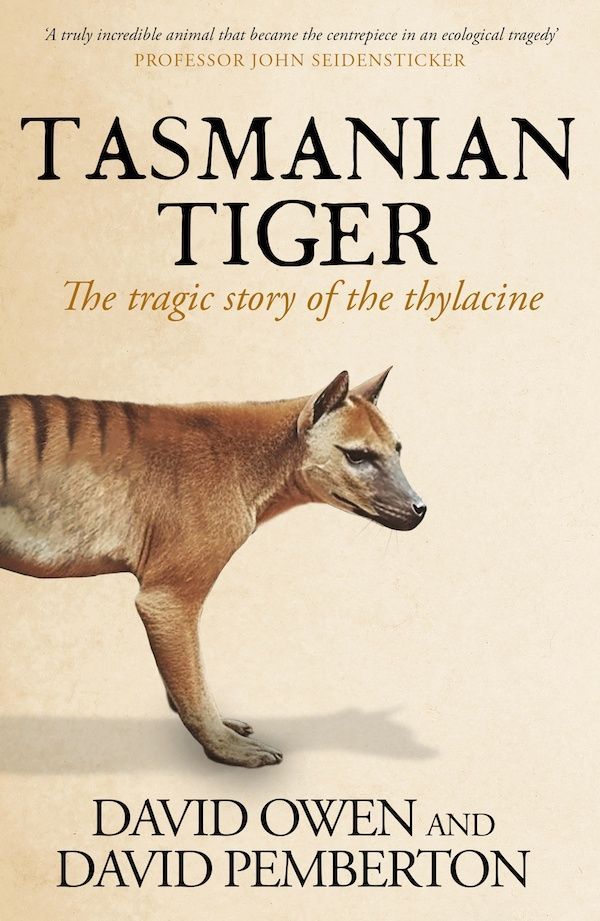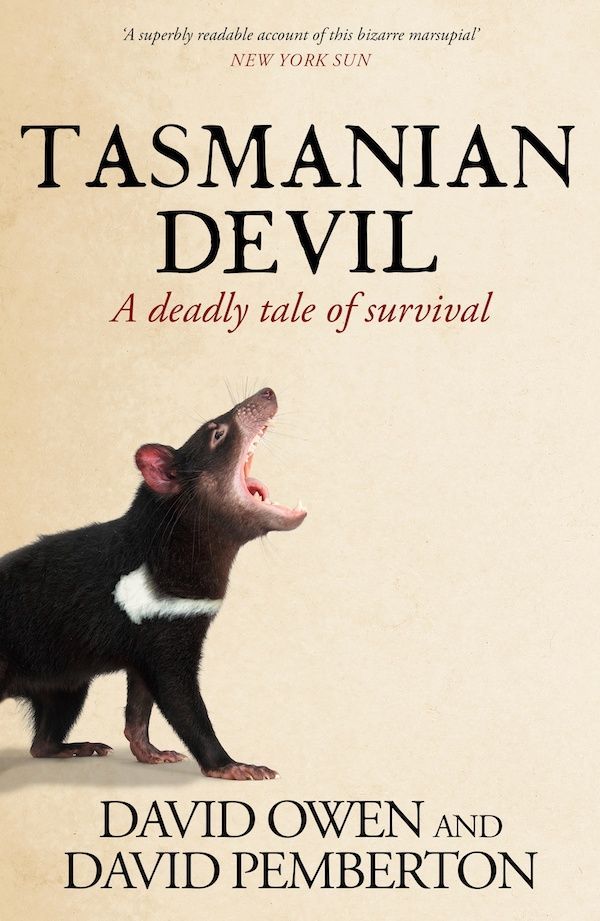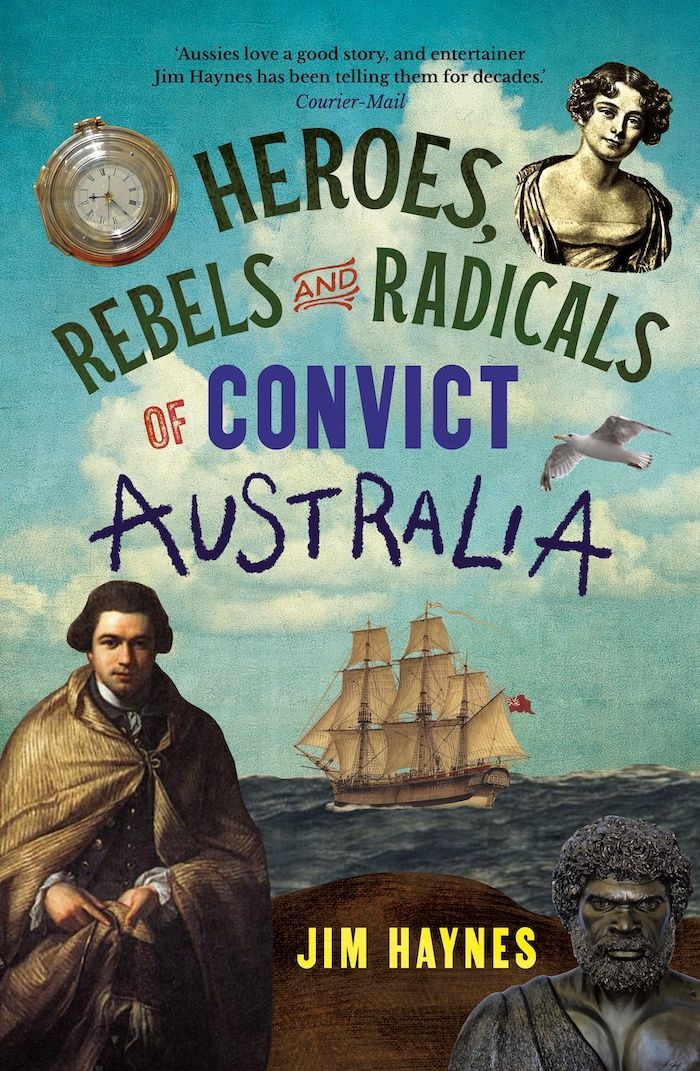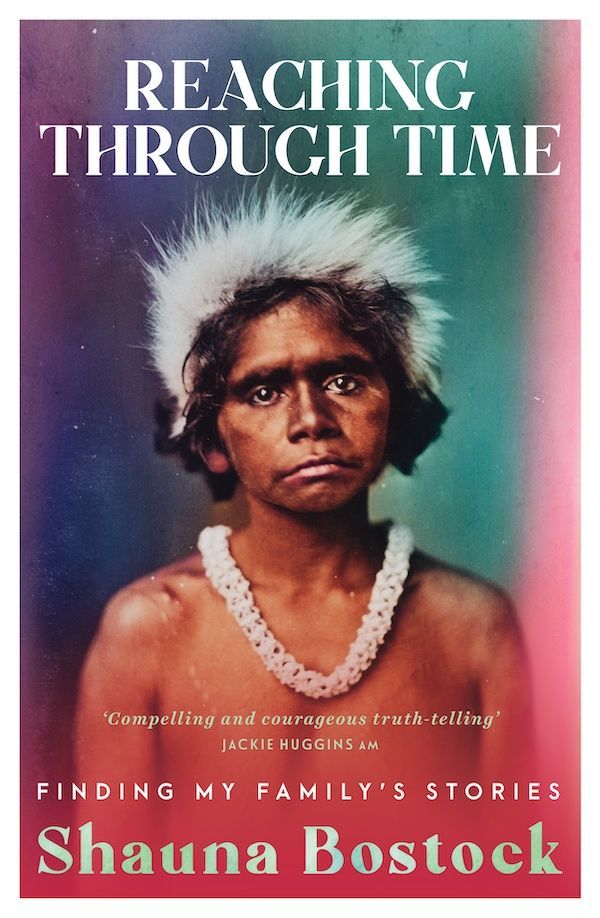Tasmanian Tiger
The Tragic Story of the Thylacine
By David Owen and David Pemberton
Published by Allen & Unwin
ISBN 9781761470394
This second book in the series on Tasmania’s animals by David Owen and David Pemberton. I read Tasmanian Devil by the same authors first from which I learned a considerable amount about both the Devil and the Thylacine.
However, in this book the authors delve into the prehistory of the thylacine, which I found most interesting to read.
They trace the thylacine back several tens of millions of years, when Gondwana was the southern hemisphere continent before it split into Antartica, South America, Africa, India, Indonesia and Australasia.
It appears that the marsupials (pouched-carrying young) only exist in South America and Australasia, because these are the areas they inhabited when Gondwana broke up.
The Tiger had been around for an extraordinarily long time and, during millions of years, had become reduced to only living in Tasmania from about 3,000 years ago. Incidentally, roughly the same time period as the Tasmanian Devil.
The Tasmanian Tiger was the world's largest marsupial carnivore, about the size of a large dog and had a back marked with between 12 to 18 stripes from its shoulders to its very long tail. These markings give it an appearance similar to a tiger, which is the reason the first Europeans named it a tiger. They first encountered this animal back in 1803. However, the Tasmanian Tiger was also named hyena, Tasmanian wolf, Zebra wolf, Native Dingo amongst others.
Van Diemen's Land was first discovered by the Dutch in December 1642 when they sighted the land mass and Captain Abel Tasman named it after the Dutch East India Company's Governor-General, Anthony Van Diemen. In 1826, it was renamed Tasmania, after the Dutch Captain, Abel Tasman, who first discovered the land - and named it Van Diemen's Land. Funny that...
The 19th century Britons and Irish, transported to Van Diemen's Land, regarded a tiger as having stealth, ferocity, cunning, near-invisibility, powerful swimming, nocturnalism, awesome strength, and occasionally, man-eating. Besides nocturnalism, the thylacine had virtually none of these tiger-like characteristics.
However, many sheep farmers decided that this was an animal they did not want around. Many of them were wealthy landowners and were prime candidates to join the ranks of the Island Government.
This book has many interesting documents and reports from people who said they sighted or were in close proximity to thylacines. There is a general feeling that thylacines were wary of humans and retreated when encountered. It seems that when men and their dogs would go on the offensive it usually meant the thylacine was terminated.
I only read one eyewitness report about the killing of a sheep. This was from a man who came across a dead sheep in his field in the early hours one morning and shot the predator. After it was too late, he found it was a wild dog, not a thylacine. All the others assumed that it was a thylacine
The rumours spread of thylacine killing livestock which became widely believed, without evidence. This escalated into action by the Tasmanian Government to offer bounties for dead "tigers". There are many, many reports from Tasmanians, as well as from other people around the world, who gave evidence of how they searched and hunted for thylacine and found them to be ferocious. This would be a natural instinct when their habitat or territory was being invaded and they were under attack. But this didn't seem to stop the legislation or the powers that be, from continuing with the slaughter.
It all seems to have come to an end when, in 1936 with the alleged last thylacine in captivity and anywhere else in the world, died at the Beaumaris Zoo in Hobart. A sad state of affairs.
Owens and Pemberton say that's not the end of the thylacine story, as many sightings have been documented since that date, even up into the 2020s, although some have been proven to be fake.
There is an interesting chapter dedicated to the story of cloning thylacines with the hope that they may proudly walk this earth again. However, there are obstacles...
Reading this book is particularly interesting and includes stories about former Senator Bob Brown and his colleagues and the search for the thylacines. It really is a page turner. It is well written, easy to read and full of interesting information. The many newspaper reports and an excerpt from the Tasmanian Government’s proceedings, when they were debating what to do about this "vermin".
Reading about all the misinformation and the lies told about the thylacine, how it had lived for millions of years until European settlement and then driven to extinction within one hundred and thirty years from approximately a population pf 5,000.made me quite angry.
This book will appeal to people with an interest in indigenous animals ,conservationists, history and more It is worth reading both Tasmanian Tiger and Tasmanian Devil as companion books.
The authors
David Owen is the author of 19 fiction and nonfiction titles, including Tasmanian Tiger and Shark: In peril in the sea. He is the Official Secretary of the Governor of Tasmania.
David Pemberton is a wildlife biologist and former manager of the Tasmanian Government's Save the Tasmanian Devil Program. He is co-editor of Saving the Tasmanian Devil, and co-author of Tasmanian Tiger with David Owen.
Reviewed by Ken
This is independent review, I am not paid by the publishers, so.If you
Liked this review - Buy me a coffee










